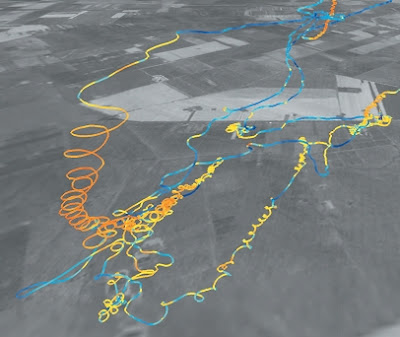Entries in Birds (207)
Goslings and Ducklings
 Sun 2009-04-12
Sun 2009-04-12 The first sign of this year's Egyptian goslings in Reading University grounds. The female has nested on the island in the large lake. For the past few weeks, Zoe and I have been going up there once or twice a day. The male has been moping around on the shore near the island but there has been very little sign of the female. This morning Zoe pointed out a reddish-brown patch in the bushes on the island, that she said was the back of the female. Then she said that she thought she saw some grey goslings moving around, so I started taking lots of photos, one of which (the above one) clearly show the head of a gosling. Zoe said she say at least 3 goslings, and there were probably more.
Traditionally, the Egyptian geese have been the first birds on the lakes to produce young each year, but this year a mallard beat them: yesterday Zoe and Liz saw a female mallard with 11 ducklings in tow. This morning I got this photo of them. It appears that all 11 survived the night.
Egyptian Goose
 Fri 2009-03-27
Fri 2009-03-27 The male Egyptian goose (Alopochen aegyptiacus) enjoying the spring sunshine beside the large lake in Reading University grounds. It's mate is thought to be on the island, sitting on eggs. In previous years the male has been rather aggressive towards other geese while it's mate was sitting, but this year it seems much more laid back.
Photo taken by my daughter Zoe on 2009-03-21.
The Flight of a Falcon
 Thu 2009-02-12
Thu 2009-02-12 An oblique view of the flight-track of a peregrine falcon taken from the paper "Comparing bird and human soaring strategies" by Zsuzsa Akos, Mate Nagy, and Tamas Vicsek (Proc Natl Acad Sci USA, 105, 4139-4143, 2008. arXiv:0902.0312v1 [physics.bio-ph]). The altitude and location of the bird were tracked by fitting it with a miniaturized GPS device. The red and yellow parts of the track correspond to when the bird was climbing (mostly on thermals), and the blue parts to when the bird was falling (gliding). The grey background is a satellite image of the terrain.


